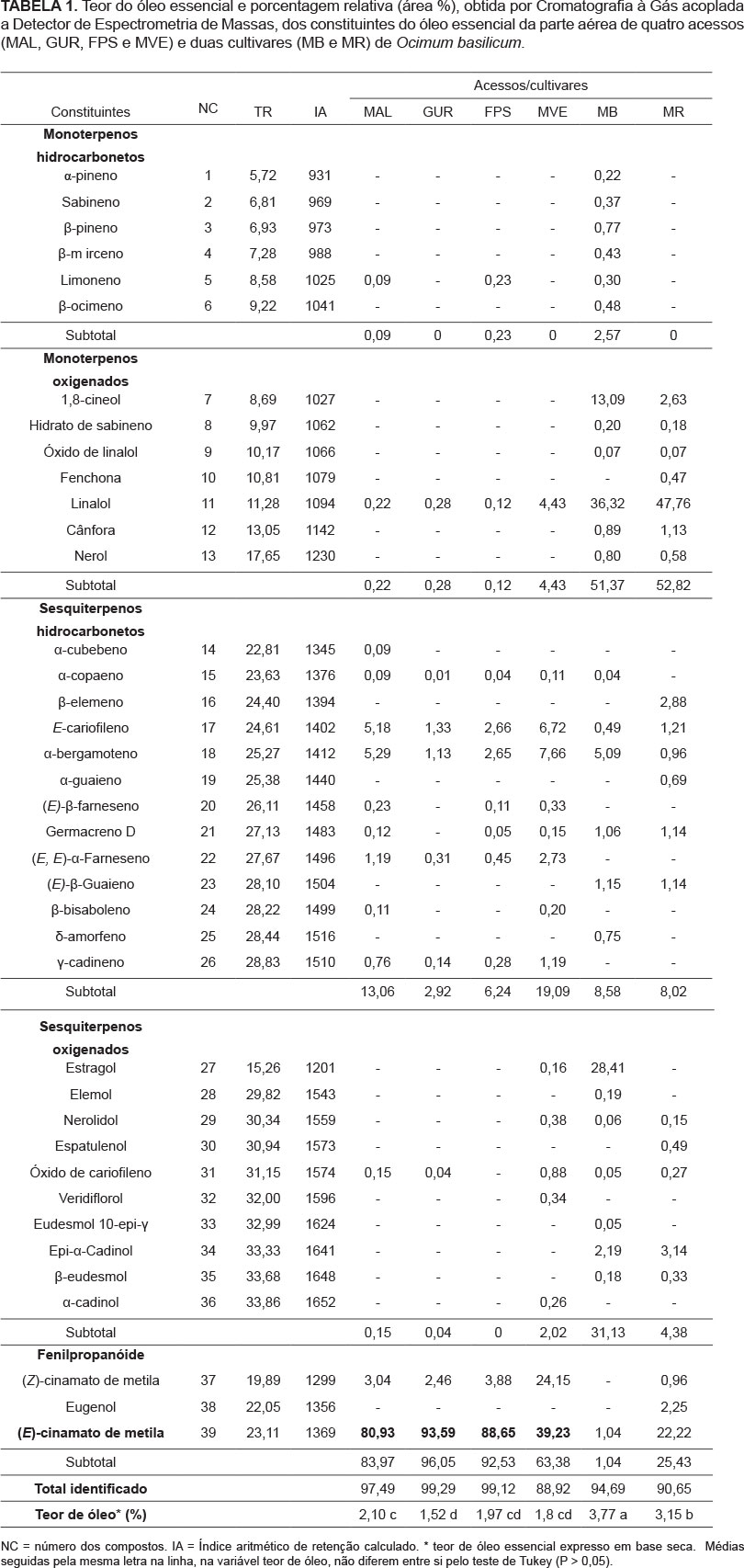The objective of this study was to evaluate the essential oil chemical composition and content of four wild accessions of basil (Ocimum basilicum L.), from different geographical regions, and two commercial cultivars grown under the same edaphoclimatic conditions. The seeds of the accessions were collected in the municipality of Gurupi, state of Tocantins (GUR), and Monte Alegre, state ofGoiás (MAL, MVE and FPS), and the seeds of the commercial cultivar of purple basil (MR) were acquired in the Gurupi market and the seeds of the commercial cultivar Maria Bonita (MB) were provided by the Garden of Medicinal Plants of the Federal University of Lavras. The seeds were planted in pots with a capacity of ten liters using as substrate soil from earth works and cattle manure in the proportion of 2:1. The essential oil was obtained by hydrodistillation using a Clevenger-type apparatus, and the identification and the relative percentage of the compounds of the essential oil were performed by Gas Chromatography coupled to Mass Spectrometry Detector. Thirty-nine compounds were identified in the essential oils obtained, which were divided into monoterpenes, sesquiterpenes and phenylpropanoids. In the cultivars MB and MR, the major compound was linalool, and in the wild accessions (MAL, GUR, FPS and MVE) it was the (E)-methyl cinnamate. The highest content of essential oil was obtained from the cultivar Maria Bonita (3.77%).
Ocimum basilicum; essential oil; Linalool; chemical composition; plant genetic resources



